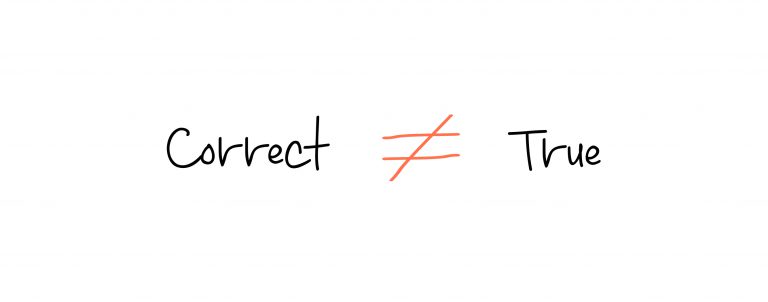Correct is not Equal to True

Ludwig Wittgenstein was an iconoclast who shook the foundations of both philosophy and mathematics by questioning the basis of both. He questioned the very notion of Mathematical Truth.
His contention was that there is a difference between “correctness” and “truth” and any mathematical assertion, no matter how rigorously proven, can only be called “correct’ and not “true”.
For a mathematical assertion to be called true – the mathematical objects which the assertion is talking about must be related to something in the real world. For example, saying 1 plus 1 equals 2 – is merely correct but not true. Because, in the first place that equality is the result of a certain set of purely arbitrarily defined rules which are part of an arbitrarily created system called Algebra.
One can equally easily define a totally different set of rules in which 1 plus 1 is not 2. In fact, such systems have been defined – for example, in a Boolean Algebra, 1 plus 1 equals 1 and not 2.
Therefore, any mathematical assertion can only be declared to be correct or incorrect with respect to a specific set of rules but not true or false unless the objects in the assertion refer to unequivocally some thing in reality and it is possible to determine the truth or falsehood of that “real” something.
I often wonder when I see sophisticated mathematical models and metrics computed using those models being used as the basis for financial decision making, how one can determine the truth or otherwise of the statements these models and metrics make.
More often than not, this distinction between correctness and truth which Wittgenstein makes isn’t followed. Correctness of the model is assumed to guarantee the truth of its assertion.
The financial world lives and breathes these models and conclusions computed from those. Whether to buy or to sell or to hold are accepted as true when they should merely be accepted as correct, if you agree with Wittgenstein. In order for their truth to be established their truth-conditions or references to real world objects or phenomena need to be established. When that is not done, what you have is the Sub-prime crisis of 2008. While that was a global catastrophe, the same principle holds at an individual level.
When financial decisions are taken based on “technical” analysis, seldom do we question whether the output of this analysis is merely correct, or it is also true.
Correctness requires rigor of procedure but establishing truth requires something more, an examination of the reality and an evaluation of how well (or otherwise) the mathematics in question reflects that reality.
Is the celebrated Black-Scholes model for pricing options “true” or merely “correct”? Is the Sensex a “true” reflection of economic reality or merely a “correct” representation of it?
The point is – the decisions which you make affect your individual reality. If these decisions are made based on models and metrics which are “correct” without pausing to examine whether the models and metrics are also “true”, the reality will hit back sooner or later!






 and then tap on
and then tap on 

0 Comments